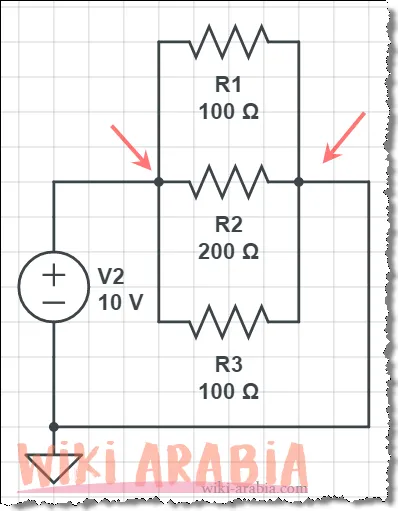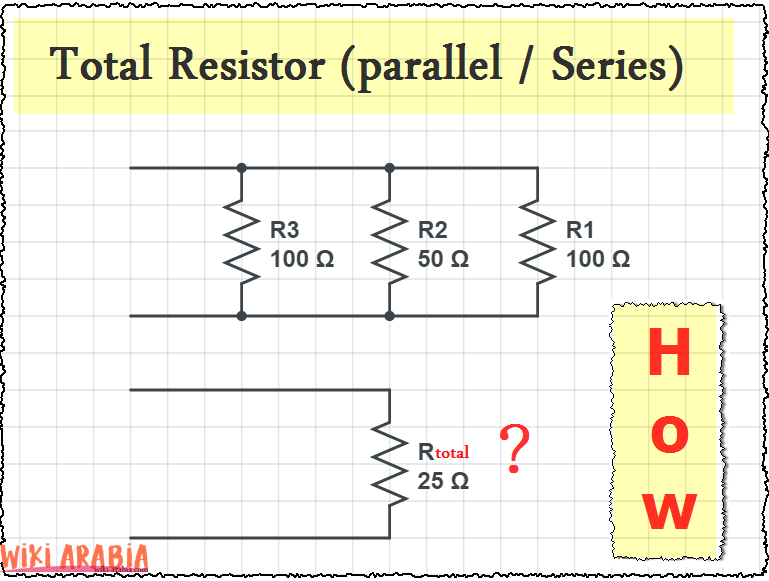Contents
In this article, we will learn how to calculate the equivalent total resistance of a set of resistors connected in series and parallel (sequence and branching). We will give you the laws for each type of connection and a drawing showing the electrical circuit.
Total Resistance calculator
Related: SMD resistors code calculator
Calculating equivalent resistance in series
Electrical resistors are connected in series or sequence in order to obtain a greater overall resistance. The total resistance of the branch is equal to the sum of the resistors tied to the sequence. The equivalent total resistance of the resistors is given respectively by the relation
Rtotal = R1+R2+...Rn
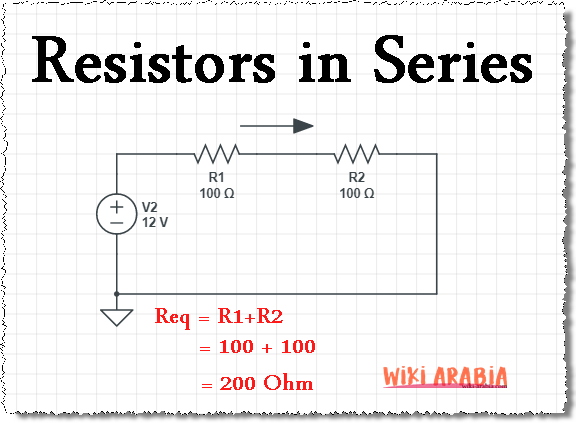
Calculate the current in resistors connected in series
The current is the same in resistors connected in series, i.e. the current in resistor R1 is equal to the current in resistor R2.
The current in the previous circuit is calculated by the relation
- I = V/Req
- I = V/(R1+R2)
- I = 12 / (100+100) = 0.06 Amp
Calculate the total resistance of resistors in parallel
The reciprocal of the total resistance is equal to the sum of the pranks of the resistors connected in parallel, and the value of the equivalent total resistance is given according to the relationship:
1/Rtotal = 1/R1+1/R2+...1/Rn
Rtotal = 1/(1/R1+1/R2+...1/Rn)
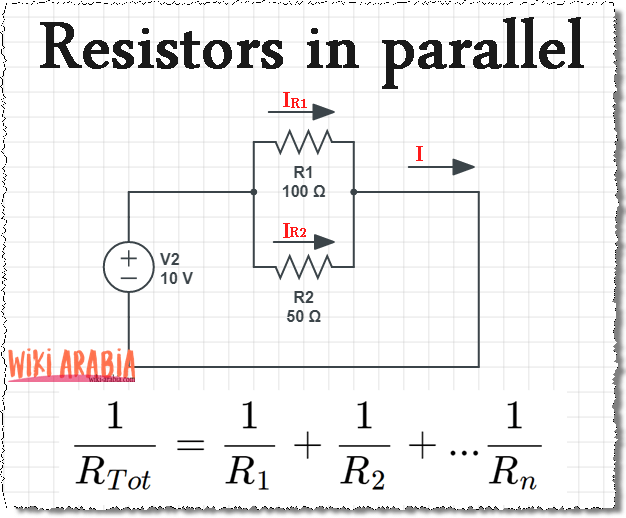
In the previous example, the current in resistivity R1 is different in value from the current in resistor R2.
In fact, the current coming from the impregnable is divided into two parts. Its value depends on the resistance value. The higher the resistance, the lower the current.
This means that the current in R1 is lower than the current in R2 because R1>R2.
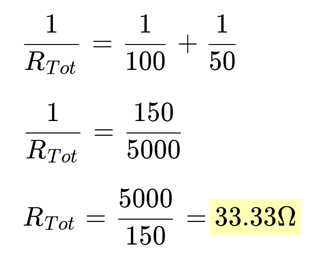
Calculation of the current in each branch
The current in each branch can be calculated after calculating the total equivalent resistance of the two resistors on the branching. This is done by Ohm's law: V = I*R.
ITot = V/R = 10/33.33 = 0.3 Amp
The value of the total current passing through the circuit is 0.3 amperes. Now let's calculate the value of the current in each branch:
IR1 = V / R1 = 10/100 = 0.1 Amp
IR2 = V / R2 = 10/50 = 0.2 Amp
As we can see, the results make sense since the sum of the two currents is equal to the total current. The current in R1 is lower because R1 is greater than R2.
An equivalent resistor is a resistor that if we connect it in an electrical circuit instead of a set of resistors between two points, the current in it would be the same as the current between the two points.
The method of calculating equivalent resistance varies according to the method of connecting resistors. In a sequence or series connection, the equivalent resistance is equal to the sum of the values of the resistors connected in sequence, while in a branch or parallel connection, the reciprocal of the equivalent resistance is equal to the sum of the resistor dumps.
The law of connecting resistors in parallel or the method of connecting resistors in parallel is done by connecting one end of the resistors all to one point of the electrical circuit and connecting the other end of all resistors to another point of the circuit.